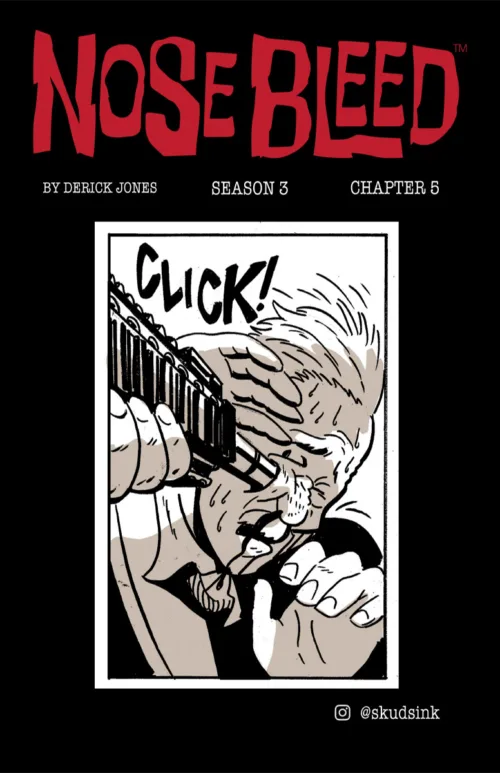Standing before Lauren Fensterstock’s magnificent installation “Colorless Field,” pictured below, I had two associations. First, I was reminded of a black-and-white bird’s-eye photograph of New York’s Central Park. Then I recalled something I learned years back: that if you take the most perfectly round ball bearing that human technology can manufacture and blow it up to the size of the Earth, it will have mountains higher than Mount Everest and valleys deeper than the Grand Canyon.
Created from carbon

The monochromatic, intricate world that Fensterstock created in “Colorless Field” with thousands of strips of cut paper, polished plexiglass, and crushed charcoal suggests that creation of the universe was an immense, complex, laborious evolutionary task if it was not accomplished with a magic wand.
Fensterstock’s charcoal palette also reminds us–not without irony because her work is devoid of human life or artifact–that carbon is present in all life forms and is the chemical basis of all known life. Her work is not altogether about black’s absence or absorption of light. Indeed, “Colorless Field” breathes and shimmers. It is archetypal. It is primordial. It is also magnetic. You want it blown up to the size of the Earth, or you want to be miniaturized, so that you can explore its depths.
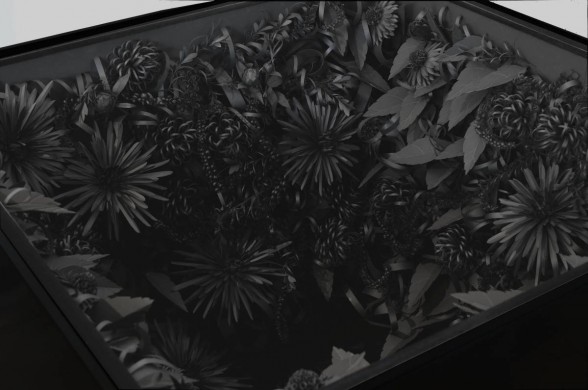
Petrified gardens and baroque details
The other works on display in the exhibition are far smaller, but all of them likewise are monochromatic black and charcoal, and they reflect Fensterstock’s obsession with traditional gardens, flora, fauna, seashells, garden grottoes (artificial caves) and caves. There are incredibly intricate, dripping stalagmites and dioramas filled with black, rubber-coated shells, plant and animal life, much of it hand-cut from paper, and black Victorian mirrors that add an element of eerie reflectiveness. A number of these pieces, most of which readily hang on the walls of the gallery, are pictured below. The detail and fecundity are unbelievable. But the ubiquitous dark monochromaticity of the pieces makes them seem petrified, desolate, dense, extravagant, and unsettling. They are reminiscent of, although far more intense than Petah Coyne’s pre-2008 sculptures.
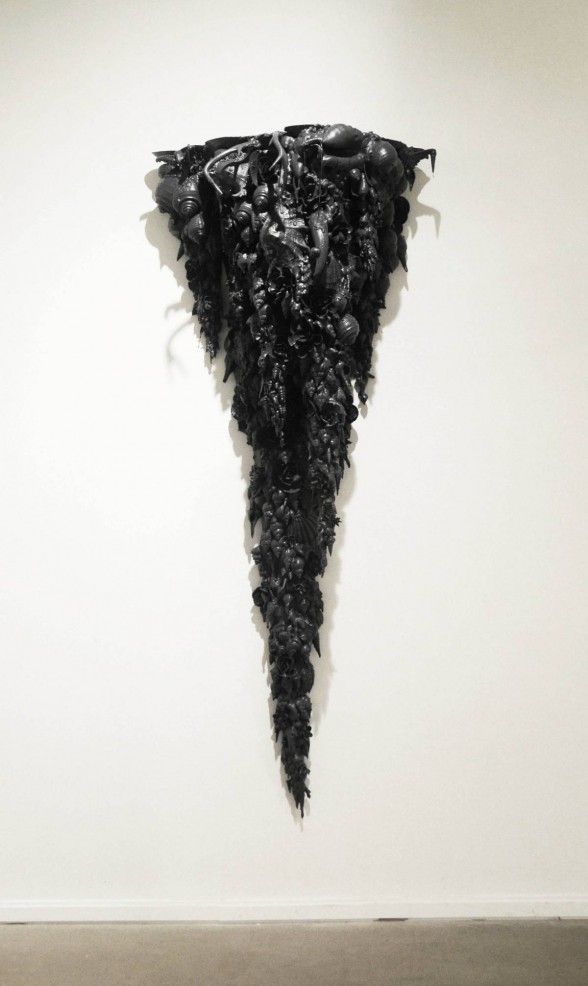
Fensterstock has been doing this type of work for a long time–there is even a similar series in white–and I suspect that “Colorless Field” is a progression from those works, and a welcome one. Although the new work remains monochromatic and black, it is far less dense and oppressive than her earlier works. Indeed, “Colorless Field” is kinetic, while the earlier pieces are static and, to some extent, depressing.
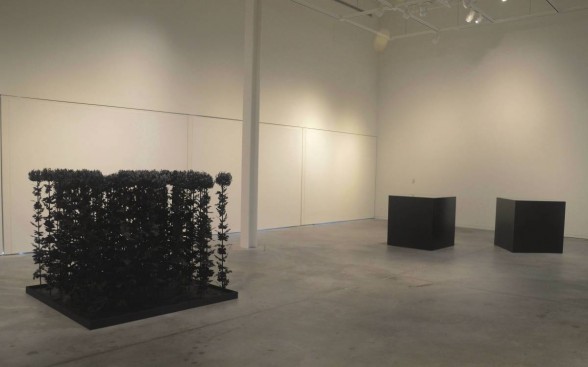
Fensterstock’s “Kiku,” also pictured here, is a paper-and-wood Japanese garden of chrysanthemums, which although still impressively elaborate when approached, feels simple, elegant, and alive in contrast to the other small works. It bridges the divide between Fensterstock’s earlier pieces and the work represented by “Colorless Field”.
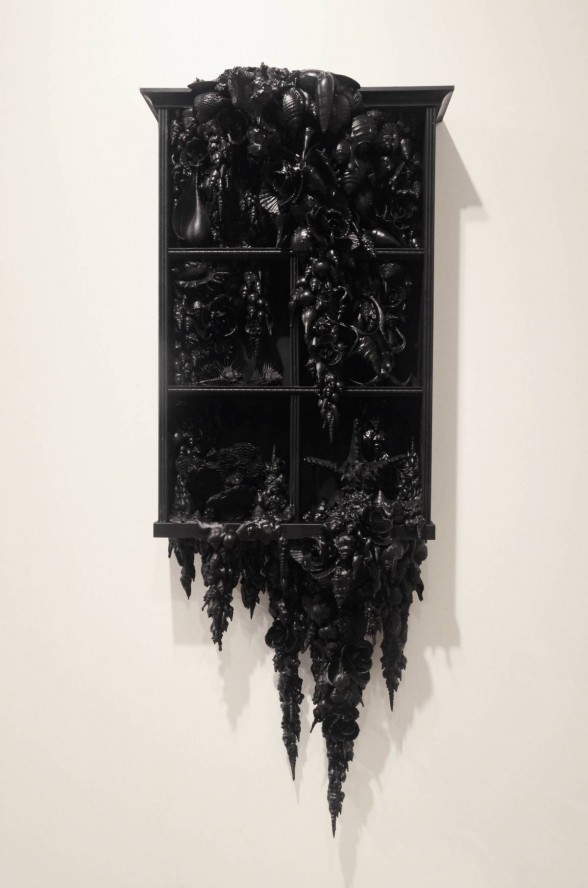
Fensterstock’s gallery, Sienna Patti Contemporary in Lenox, Massachusetts, has published a monograph, Radical Sentimentalism: The Work of Lauren Fensterstock, including an essay by the artist, critic, and poet Carol Diehl. I found the following quote from Diehl’s essay on the Sienna Patti website: “Both tempting and threatening, Fensterstock creates objects of desire whose beauty draws us in, only to repel with intimations of dark secrets. This tension culminates in an illusion of depth and motion that leaves viewers with the eerie sensation that these shadow gardens have a sinister life–one that will cause them to grow and change long after we have left the room.”
I didn’t picture the growing, changing sinister life that Diehl imagined. Instead, I was struck by the fact that we were never in the room in the first place, and I was intrigued but also puzzled by Fensterstock’s vision of a world that has been stripped of chlorophyll and deprived of photosynthesis. Imagine a black Rousseau–a Rousseau with all of the color sucked out of it. There may be a message in the medium, but it is inscrutable.
Fensterstock is based in Portland, Maine. This year she was named one of the top nine trending artists at Basel Miami. For an illuminating discussion with her, read “Unearthing Gardens,” by Emily McDermott, which appeared in Interview magazine in February of this year. In addition to reflecting upon her preoccupation with gardens and caves, in the interview, Fensterstock discusses her interest in the 18th-century English artist Mary Delany and contemporary artists Robert Smithson, Diana al-Hadid, and Tony Smith.
Forays and Follies will be on display in the URBN Center Annex’s Leonard Pearlstein Gallery of the Antoinette Westphal College of Media Arts & Design at Drexel University through August 28, 2015.






